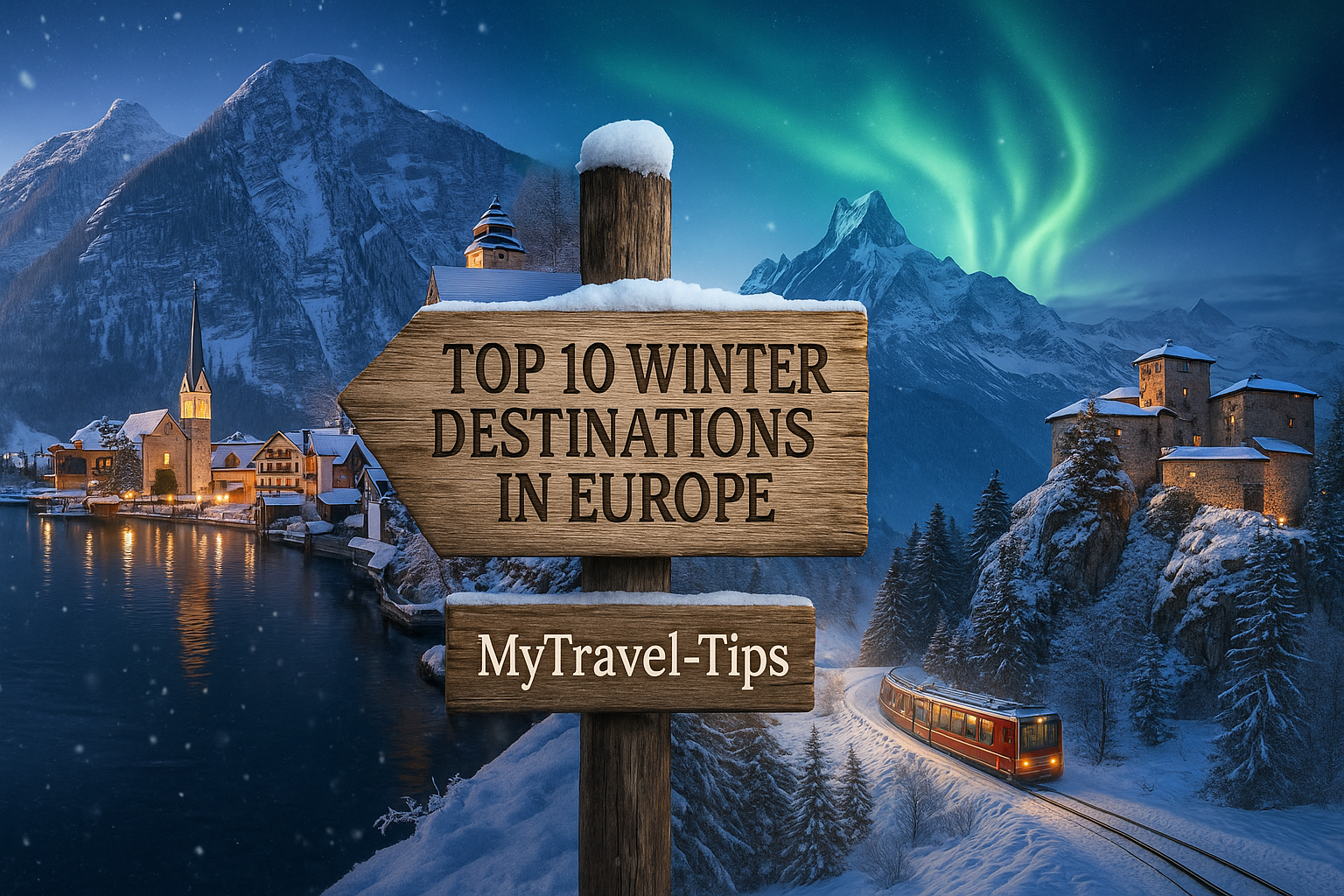Top 10 Wildlife and Nature Escapes in Europe for Eco-Conscious Travelers
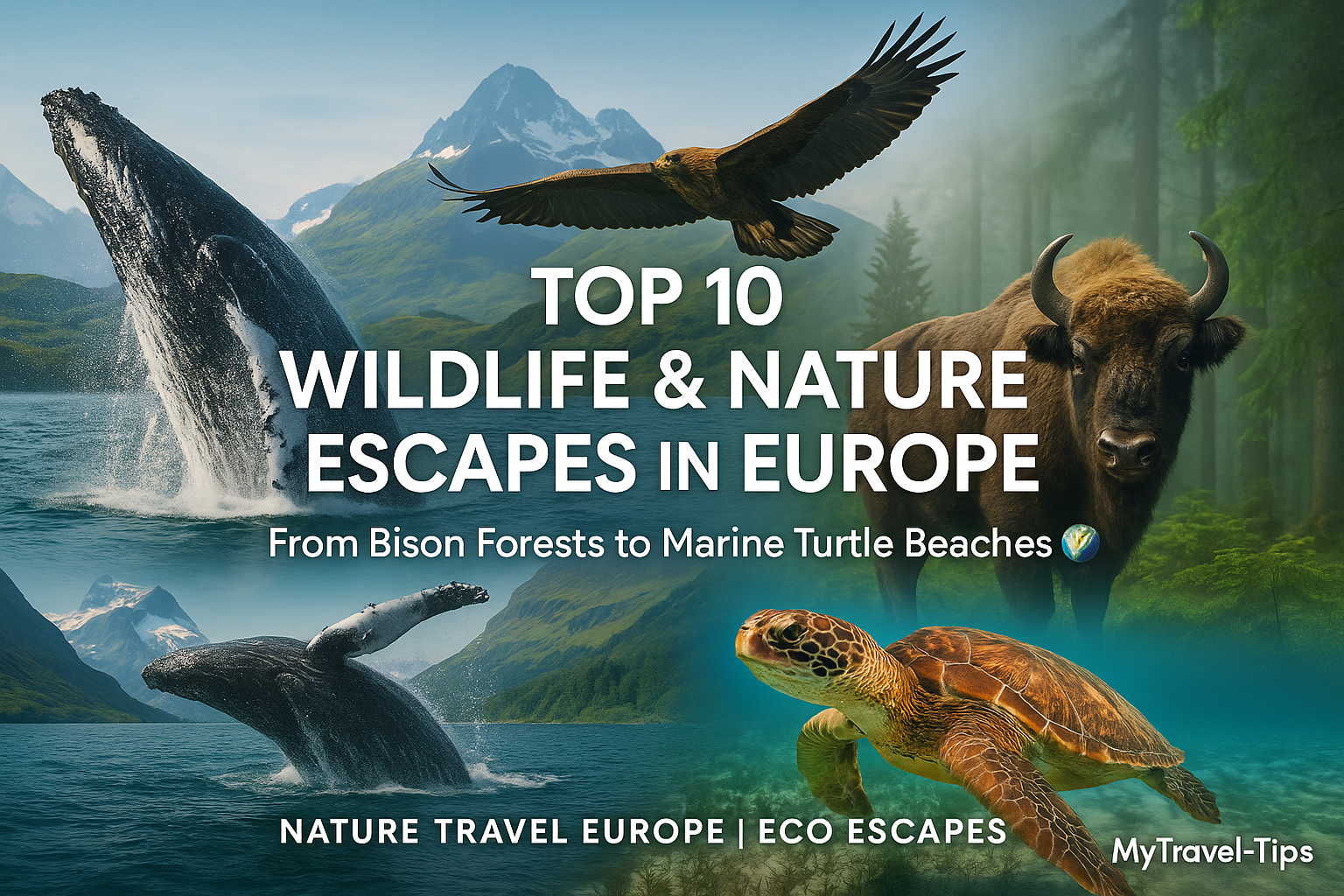
🌿 Introduction – Reconnect with the Wild Side of Europ
When most people think of Europe, they imagine iconic cities, bustling landmarks, and historic architecture. But away from the crowds lies another side — one shaped by glacial lakes, deep forests, coastal wetlands, and wild creatures still roaming free. From brown bears in the Carpathians to whales in Iceland’s fjords and sea turtles along Greece’s coastlines, Europe is a hidden haven for nature lovers and wildlife seekers.
This guide brings together the top 10 wildlife and nature escapes in Europe — places where the air is pure, the ecosystems are protected, and your presence can support conservation rather than harm it. Whether you’re dreaming of alpine solitude, birdwatching in wetlands, or snorkelling in protected marine zones, these destinations prove that Europe’s true luxury is its natural beauty.
🌍 Want more off-grid inspiration? Explore our companion guides on Hidden Nature Escapes and Cleanest Beaches in Europe for peaceful, planet-friendly adventures.
1. Białowieża Forest – Poland/Belarus
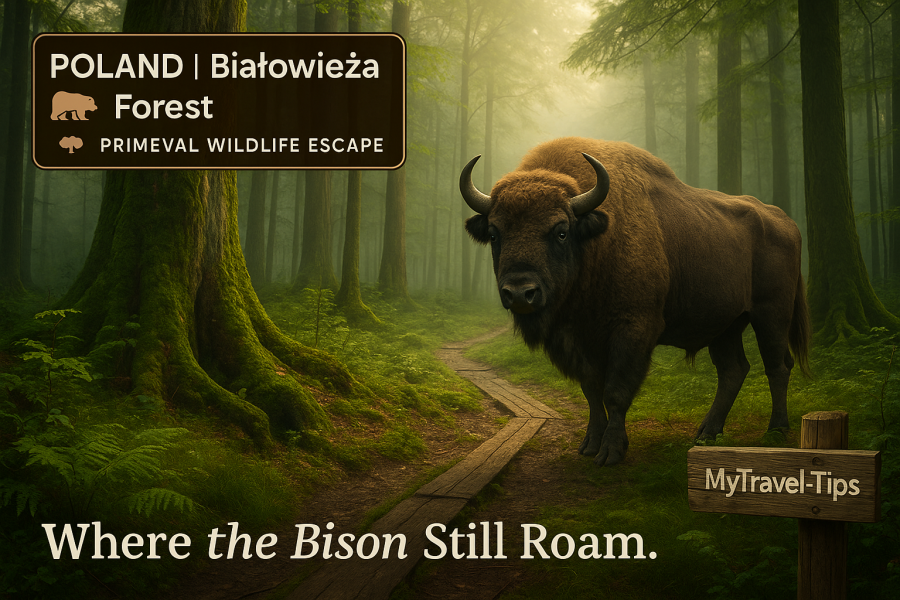
One of Europe’s last and largest primeval forests, Białowieża Forest straddles the border of Poland and Belarus and is a UNESCO World Heritage Site. This ancient woodland has survived thousands of years with minimal human impact and offers a rare chance to walk among towering oaks, dense spruce groves, and a thriving population of European bison — the continent’s heaviest land mammal.
- Best Time to Visit: April to October (for wildlife visibility and green foliage)
- Key Wildlife: European bison, lynx, wolves, red deer, black stork
- Top Experience: Guided walking safari in the Strict Reserve with local trackers
- Eco Note: Wild camping is not permitted inside the core reserve, but eco-lodges and rural stays nearby are excellent alternatives
For nature lovers and conservation travelers, this forest is a time capsule of European wilderness — where nature still rules and silence is filled with bird calls and hoofbeats. Access is easy from the Polish side via Białowieża village, with sustainable tourism well integrated into local life.
💡 Eco Tip: Support local guides and rangers — they’re part of why this forest remains one of Europe’s best-preserved natural wonders.
2. Cairngorms National Park – Scotland
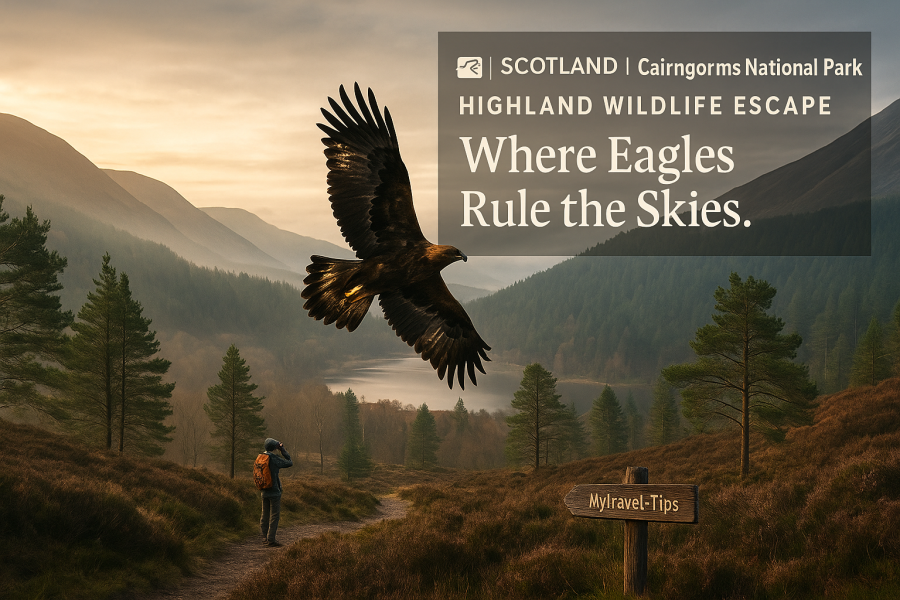
The largest national park in the UK, Cairngorms National Park spans across Scotland’s wild Highlands and offers an unrivaled variety of landscapes — from ancient Caledonian pine forests and mountain plateaus to moorlands and rivers teeming with wildlife. This is one of the few places in Britain where you can still spot wildcats, golden eagles, and red squirrels in their natural habitat.
- Best Time to Visit: May to September (milder weather and best birdwatching)
- Key Wildlife: Golden eagles, red deer, ospreys, red squirrels, Scottish wildcats (rare)
- Top Experience: Hike through Rothiemurchus Forest or take a guided wildlife safari near Aviemore
- Eco Note: The park is excellent for low-impact hiking, biking, and rewilding-focused stays
With its mix of rugged mountain ranges and quiet woodland trails, the Cairngorms offer a genuine escape into one of Europe’s most underrated natural regions. You’ll also find rewilding projects, eco-lodges, and some of the clearest night skies in the UK — perfect for slow, soul-stirring travel.
💡 Eco Tip: Book a stay at a certified rewilding retreat or join a ranger-led walk to support conservation work in this unique Highland ecosystem.
3. Madeira Island Biosphere Reserve, Portugal
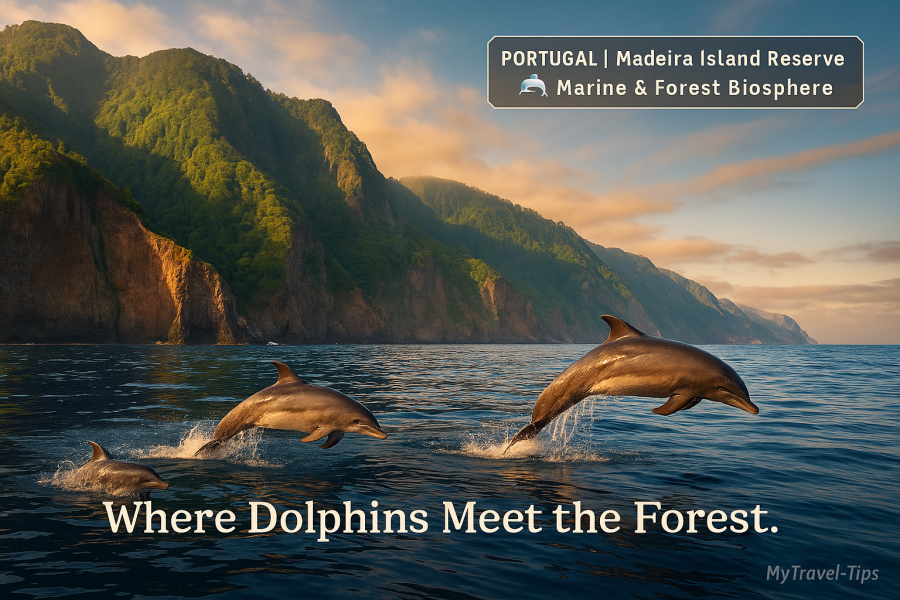
Often dubbed the “Hawaii of Europe,” Madeira is not only stunning — it’s also a UNESCO Biosphere Reserve recognized for its volcanic coastlines, lush laurel forests, and incredible marine life. Located in the Atlantic off the coast of Portugal, this island offers both land-based biodiversity and some of the best dolphin and whale watching in Europe.
- Best Time to Visit: April to October (for stable weather and marine sightings)
- Key Wildlife: Bottlenose dolphins, sperm whales, monk seals, shearwaters, endemic laurel forest birds
- Top Experience: Responsible dolphin watching tour + Levada walk through Laurisilva forest
- Eco Note: Much of Madeira’s coast and forest are protected, with many activities now certified under sustainable marine tourism
Whether you're hiking along cliffside levadas or gliding beside dolphins offshore, Madeira feels like a nature-lovers’ paradise. It’s the perfect balance of tropical energy, European charm, and genuine conservation focus — all without mass tourism overload.
💡 Eco Tip: Choose operators that are WiSe Scheme or EU Eco-label certified to ensure marine life is observed respectfully and without disturbance.
4. Doñana National Park, Spain
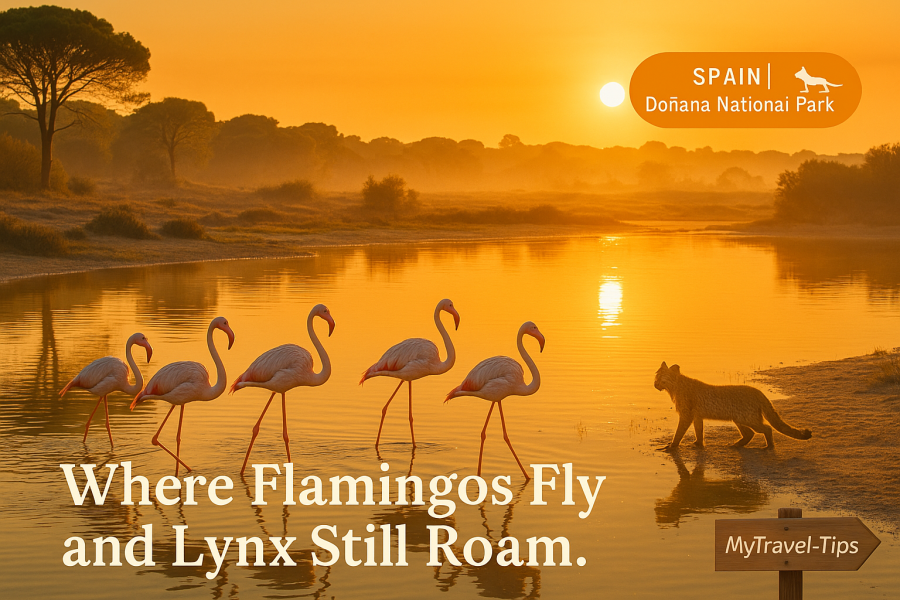
Located in Andalusia, Doñana National Park is one of Europe’s most important wetlands and a vital stopover for migratory birds. Spanning marshes, sand dunes, pine forests, and lagoons, it hosts some of the rarest species on the continent — including the critically endangered Iberian lynx. This UNESCO-listed reserve is a haven for birdwatchers, photographers, and nature lovers seeking southern Spain’s wilder side.
- Best Time to Visit: February to May (for bird migration) or October (cooler, fewer crowds)
- Key Wildlife: Iberian lynx, imperial eagle, flamingos, wild boar, spoonbills
- Top Experience: Sunrise 4x4 eco-safari through marshlands or a guided lynx-tracking hike near El Acebuche
- Eco Note: Doñana is highly protected — solo hiking is limited in core zones; guided tours support park preservation
The park’s surreal mix of mirror-like wetlands and sandy flats gives it a cinematic edge — and the biodiversity is unmatched in southern Europe. From vast flocks of flamingos to elusive wildcats, this is where Spain’s natural soul shines brightest.
💡 Eco Tip: Choose a licensed wildlife operator and avoid disturbing nesting or feeding zones. Binoculars > footprints.
5. Abruzzo, Lazio & Molise National Park, Italy

Tucked away in the Apennine Mountains of central Italy, the Abruzzo, Lazio & Molise National Park is a rugged refuge where wild wolves, bears, and chamois still roam free. Established in 1923, it’s one of Italy’s oldest and most ecologically important parks — a place where traditional villages meet untamed nature under snow-capped peaks and dense beech forests.
- Best Time to Visit: May to October (for hiking and wildlife spotting); winter for snowy landscapes
- Key Wildlife: Apennine wolf, Marsican brown bear (critically endangered), chamois, red deer, golden eagles
- Top Experience: Guided wildlife tracking hikes near Pescasseroli or Val Fondillo valley
- Eco Note: Strict conservation zones are in place — stay on marked trails and use certified guides for wildlife tours
What sets this park apart is the rawness — you can feel it in the wind, the silence, and the stories whispered in mountain refuges. It’s an incredible place for photographers, solitude-seekers, and travelers who crave meaningful contact with wilderness and heritage.
💡 Eco Tip: Visit outside of peak weekends, and choose slow travel by train or bike where possible. This region is ideal for low-impact exploration and supporting rural communities.
6. Westfjords Coastal Region, Iceland
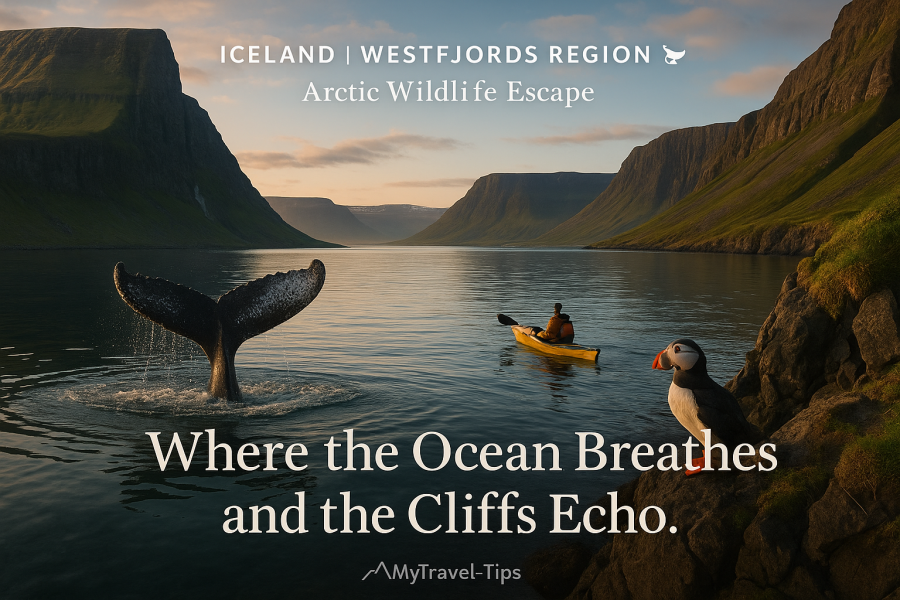
Remote, rugged, and richly alive with seabirds and marine giants, Iceland’s Westfjords offer one of Europe’s most dramatic coastal wilderness escapes. This isolated peninsula, far from the country’s tourist-heavy south, is a place of soaring cliffs, Arctic foxes, puffin colonies, and some of the best whale watching anywhere in the North Atlantic.
- Best Time to Visit: June to August (milder weather, whale and puffin season)
- Key Wildlife: Humpback and minke whales, Arctic foxes, puffins, guillemots, seals
- Top Experience: Kayak among fjords or take a boat trip from Ísafjörður for whale watching
- Eco Note: Entire region emphasizes low-impact travel and is a leader in sustainable tourism in Iceland
The silence here is surreal — broken only by waterfalls tumbling into fjords or the distant spray of a surfacing whale. For nature travelers who value isolation, slow travel, and unforgettable scenery, the Westfjords deliver an otherworldly, soul-soothing experience.
💡 Eco Tip: Take public buses or bike between villages and fjords — many whale tours now use electric boats to minimize acoustic impact on marine life.
7. Zakynthos Marine Park, Greece
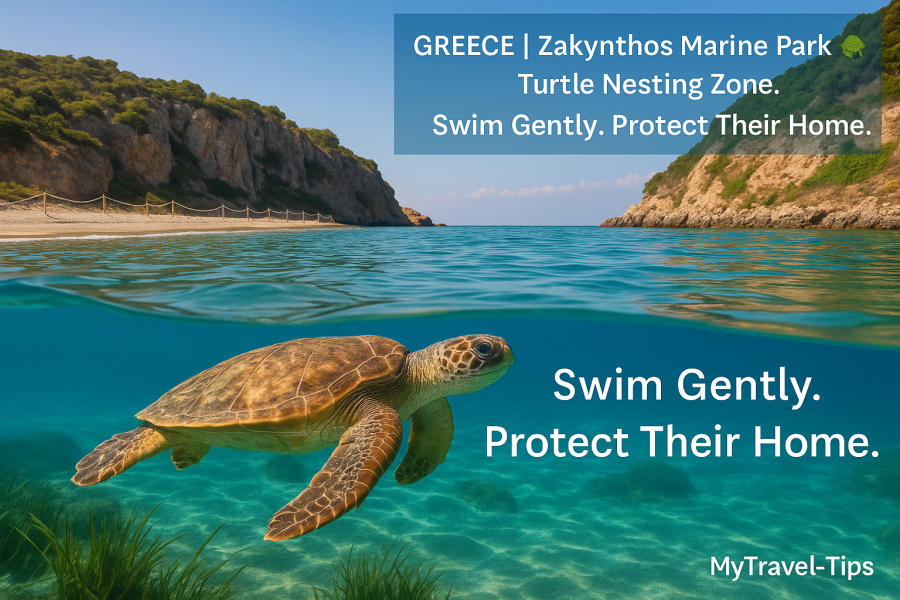
In the turquoise waters off the coast of Zakynthos Island lies the first national marine park in Greece — the Zakynthos Marine Park. Located in the Laganas Bay area, this protected zone is one of the most important nesting grounds in the Mediterranean for the endangered loggerhead sea turtle (Caretta caretta). Beyond turtles, its underwater meadows and rocky reefs also support monk seals, colorful fish, and crystal-clear snorkeling spots.
- Best Time to Visit: May to September (turtle nesting season and clear waters)
- Key Wildlife: Loggerhead turtles, Mediterranean monk seals, grouper, moray eels, dolphins
- Top Experience: Guided snorkeling tour in protected zones or sunset walk along Kalamaki beach during nesting season
- Eco Note: Beach access is regulated during nesting periods; boating in turtle zones is restricted to licensed eco-operators
Despite being in a popular tourist region, this marine park showcases how conservation and tourism can co-exist. Quiet observation, responsible boating, and community-run eco-projects make Zakynthos a model for sustainable island travel in the Mediterranean.
💡 Eco Tip: Never touch or approach nesting turtles. Join certified eco-tours with biologists who help monitor and protect turtle populations.
8. Bavarian Forest National Park, Germany
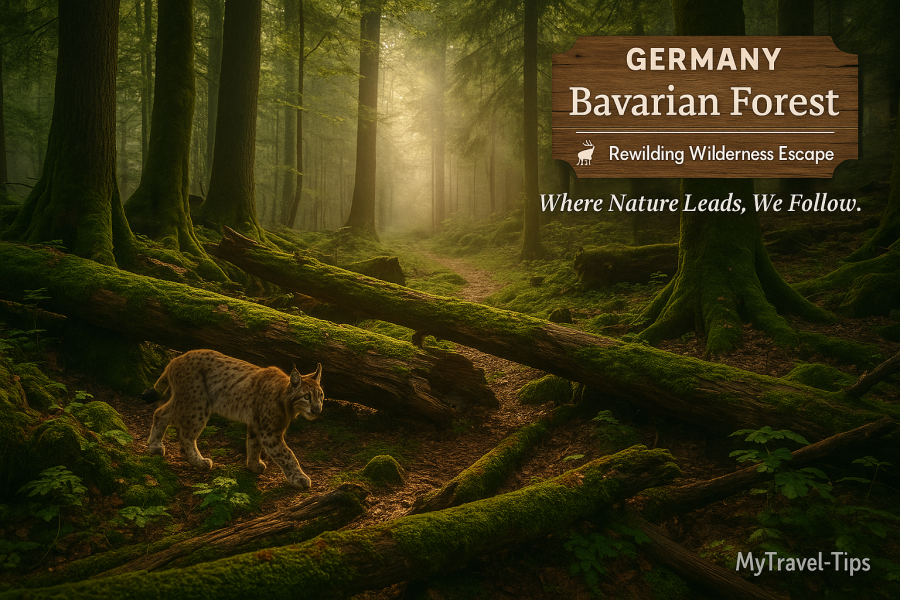
Germany’s oldest national park, Bavarian Forest National Park borders the Czech Republic’s Šumava National Park to create the largest transboundary forest reserve in Central Europe. This vast and biodiverse wilderness is a rewilding success story — home to lynx, red deer, wild boar, and capercaillie, all thriving in a forest left largely to natural processes.
- Best Time to Visit: May to October (hiking and wildlife viewing); December to February (snow trekking)
- Key Wildlife: Lynx, red deer, capercaillie, wild boar, black woodpecker
- Top Experience: Walk the Baumwipfelpfad tree canopy trail or explore the wilderness zone trails near Neuschönau
- Eco Note: Entire park operates under a “Let nature be nature” philosophy — no clear-cutting, minimal infrastructure, and fully protected wilderness zones
Unlike many other parks, the Bavarian Forest offers a unique look at how ecosystems thrive when left undisturbed. Fallen trees remain where they land, old-growth forests regenerate naturally, and human access is carefully managed. This is a peaceful and deeply restorative escape for hikers, photographers, and conservation-minded travelers.
💡 Eco Tip: Visit during quieter shoulder seasons and use the park’s free eco-bus to reduce car traffic. Support local guesthouses that invest in forest conservation and education.
9. Kopacki Rit Wetlands – Croatia

Often described as the “Amazon of Europe,” the Kopački Rit Nature Park in eastern Croatia is one of the most important floodplain wetlands on the continent. Formed by the confluence of the Drava and Danube rivers, this expansive marshland is a critical habitat for over 260 species of birds and numerous amphibians, reptiles, and aquatic mammals. It’s a paradise for birdwatchers and lovers of slow, immersive nature.
- Best Time to Visit: March to June (spring migration and breeding season); autumn for vivid wetland colors
- Key Wildlife: White-tailed eagles, black storks, egrets, herons, wild boar, European pond turtle
- Top Experience: Canoe tour through the flooded forest or observation walk from Tikveš Castle area
- Eco Note: It’s a Ramsar-designated wetland; visitors are encouraged to use marked trails and official boats only
What makes Kopački Rit so special is its rhythm — shaped by seasonal floods and bird migrations. It’s peaceful, photogenic, and deeply tied to the traditional way of life in this region of Slavonia. A true hidden gem far removed from Croatia’s busy coastal hotspots.
💡 Eco Tip: Visit early morning for best wildlife visibility. Avoid drone usage and loud activities to protect nesting zones and flight paths.
10. Hohe Tauern National Park – Austria

As the largest protected area in the Alps and one of the most biodiverse zones in Central Europe, Hohe Tauern National Park is Austria’s wild heart. Home to over 10,000 species of plants and animals, this vast alpine reserve is where you can spot ibex, marmots, golden eagles — and if you’re lucky, the elusive Eurasian lynx — all beneath the glacial peaks of the Grossglockner.
- Best Time to Visit: June to September (for hiking, wildlife viewing, and wildflowers)
- Key Wildlife: Alpine ibex, golden eagle, chamois, marmots, lynx
- Top Experience: Hike the Gamsgrubenweg trail or visit the Mallnitz BIOS visitor center for family-friendly wildlife education
- Eco Note: The park is divided into core wilderness and buffer education zones — all tourism follows strict sustainability codes
With over 1,800 square kilometers of protected alpine ecosystems, Hohe Tauern is more than just a park — it’s a living blueprint for sustainable mountain conservation. Whether you're on a glacier-edge trek or relaxing in a flower-filled valley, nature is always the main attraction here.
💡 Eco Tip: Choose ranger-led tours or take part in seasonal citizen science programs. You’ll leave with more than memories — you’ll contribute to Alpine conservation.
Final Summary
🧭 Final Thoughts: Choose Your Wild Europe
- Love forests and large mammals? Head to Białowieża, Abruzzo, or Bavarian Forest for bears, bison, and lynx.
- Prefer coastlines and marine life? Explore Zakynthos, Westfjords, or Madeira for dolphins, whales, and turtles.
- Seeking birdwatching havens? Doñana or Kopački Rit are paradise during spring and autumn migrations.
- Looking for remote alpine escapes? Try Hohe Tauern or Cairngorms for peaceful hikes and rare species.
Europe’s wild side is closer than you think — and every nature escape you choose helps preserve its future. Whether you go for the mountains, wetlands, or the sea, traveling thoughtfully makes all the difference. 🌍✨
🧳 Planning a road trip or wilderness hike next? Check our popular guides on free camping in Europe and Alpine hiking trails to pair your journey with unforgettable landscapes.



